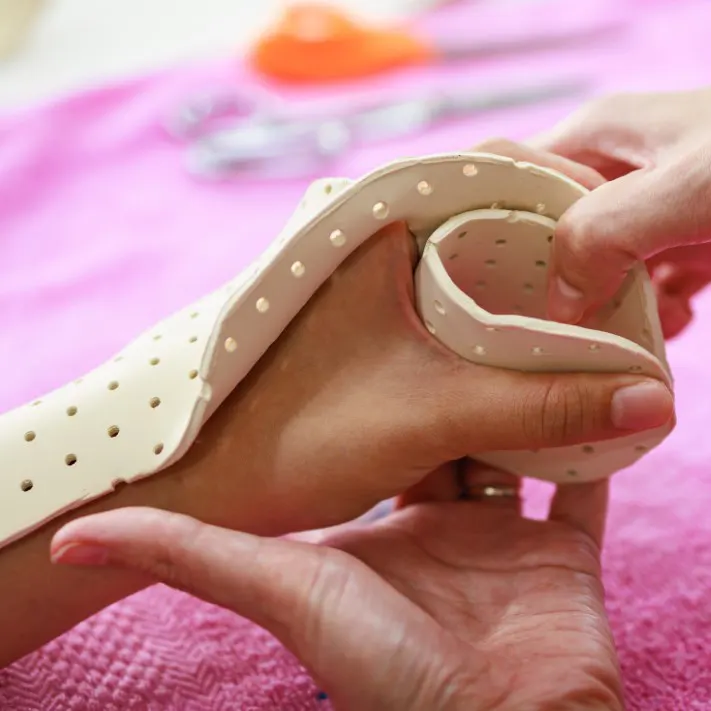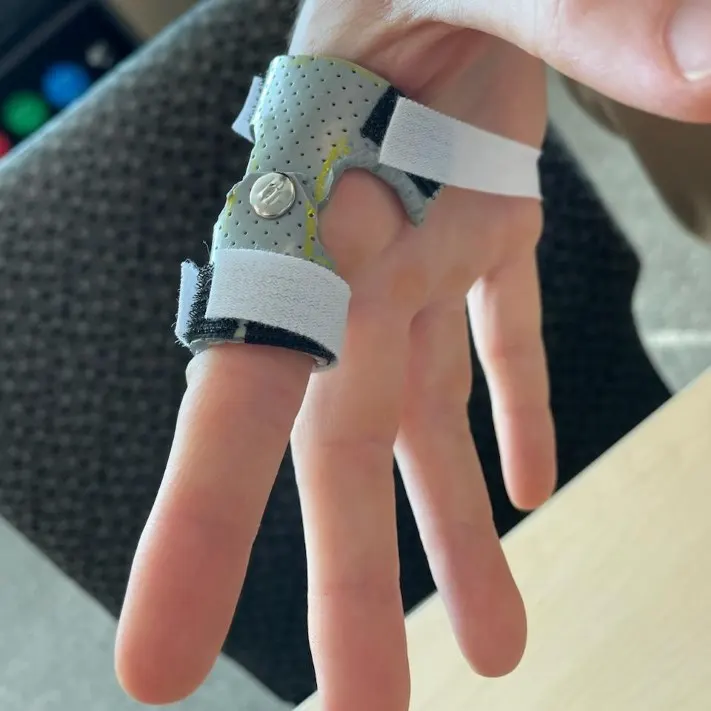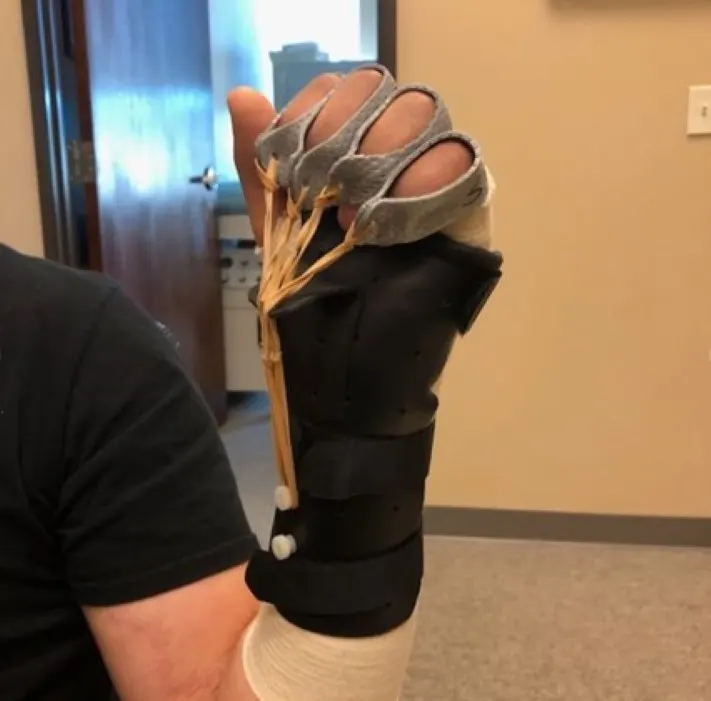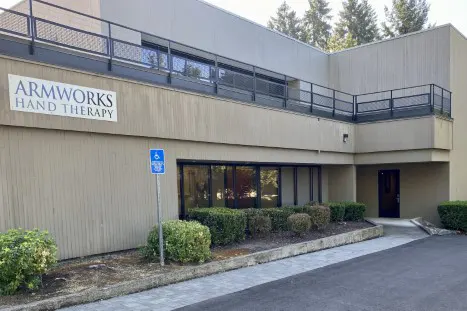What is Custom Splinting?
Splints are often used after elbow, wrist, and hand injuries to help reduce swelling and pain, and allow your injury to rest and heal. A custom splint is designed specifically to fit you: tailored to your measurements and designed/formed on you right in the hand therapy clinic. Your custom splint can be adjusted for expected changes, like swelling, as you continue to heal to protect the injured area correctly.
The hand therapists at Armworks Hand Therapy can help determine the best splint for your needs. If a custom splint is recommended for your injury, your hand therapist will explain this process to you before designing, creating, and forming your custom splint. They will also give you instructions on when/how to wear it, any precautions that should be taken, and answer any other questions that you may have.
Prefabricated vs. Custom Splints
There are essentially two types of splints: Prefabricated and Custom. A prefabricated splint is one made to be used for general injuries/problems and is usually available in a small, medium, or large size. A prefabricated splint is not always the right size and may not place the wrist or hand in the proper position for certain problems. Often, a custom splint is more helpful.
Reasons for Custom Splinting
There a several reasons a custom splint may be needed to treat your elbow, wrist or hand injury. Here are some common examples:

Conditions We Treat with Custom Splinting
Armworks Hand Therapists have extensive knowledge fabricating custom splints needed for elbow, wrist, and hand injuries. A custom splint may be appropriate for:
- Carpal tunnel syndrome
- De Quervain’s tenosynovitis
- Arthritis
- Fractures
- Sprains
- Joint dislocations
- Severe soft tissue injuries
- Post-surgical healing
- Post laceration tendon repairs

Custom Splinting Treatment
Custom splints for elbow, wrist, and hand injuries are designed to meet each individual patient’s needs. Armworks Hand Therapist will first perform a professional evaluation of your injury and follow any recommended instructions given by your doctor. If a custom splint is needed, your hand therapist will:
- Measure your anatomy and design a splint for your specific injury
- Make necessary adjustments to factor in your comfort and needs
- Discuss instructions for wear and use
- Discuss timeframe and treatment plan (including in clinic and at home exercise programs)
- Communicate with you and your doctor regarding your healing progress

Frequently Asked Questions
-
Why would I need a custom splint?
A custom splint can provide appropriate positioning and protection for your body to heal properly. Depending on your injury and needs, your hand therapist may recommend a custom splint after an elbow, wrist, or hand fracture, tendon, or overuse injury.
-
Can I request a custom splint?
You can discuss with your therapist which splint options would be appropriate based on your injury.
-
How long does it take to make a custom splint?
A custom splint typically takes between 15-30 minutes to design and make. You will be able to take the splint home after your appointment.
-
How long will I have to wear a custom splint?
Every splint is designed to be used for a different length of time, some splints are designed to be used for weeks and others are designed for long term use. Your hand therapist will be able to provide specific recommendations based on your injury.
-
What restrictions do I have when wearing a custom splint?
A custom splint is made out of heat-sensitive material, so you want to avoid leaving the splint in a hot car or using any hot tools on the splint at home. Your hand therapist will teach you about other restrictions and precautions related to your injury when making a custom splint.
-
What is the difference between a splint vs. brace?
Essentially, there is no difference between a splint and a brace; the words can be used interchangeably. Sometimes a splint is also called an orthosis. A splint or brace is a device used to hold a body part still after an injury or surgery. There are many different types of splints needed for various types of injuries. Armworks Hand Therapists are able to design and fabricate custom splints, or when appropriate recommend prefabricated splint options for patients.
-
Does Armworks take my insurance?
Here is a list of the insurance plans accepted by SportsCare Physical Therapy and Armworks Hand Therapy. If you are unsure of your coverage or if your plan is accepted, please contact one of our offices. We are happy to assist you in learning about your benefits.
-
Where is Armworks located?
Armworks Hand Therapy has offices in Gresham, NE Portland, Clackamas, Beaverton, and Tigard. For location specific contact information click here.





